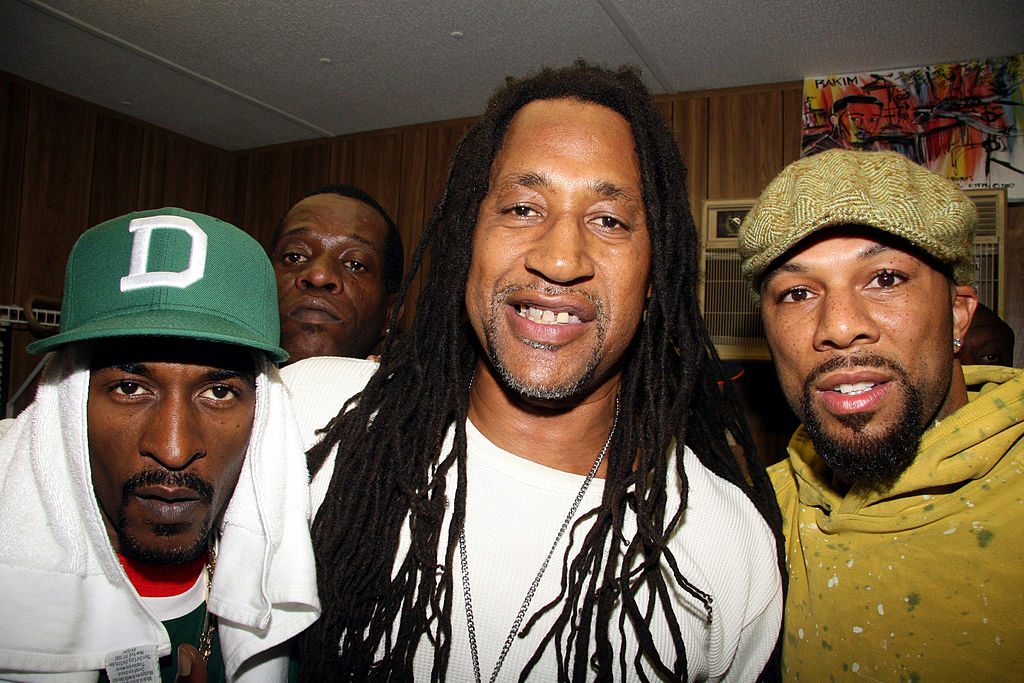
Hip-Hop Culture Is Closer To 100 Years Old Than 50 Years Old
Every August 11, Hip-Hop Heads celebrate a birthday associated with the culture. In 1973, that was the day that many historians credit DJ Kool Herc (aka Clive Campbell) with throwing a back-to-school jam at the rec center of 1520 Sedgwick Avenue in New York City’s Bronx borough. In the last decade, Google and the federal government are just two major entities to honor that date in paying respect to one of the most significant cultural forces of the last half-century.
At this party, which was also orchestrated by Herc’s sister, Cynthia Campbell, the Jamaican-born DJ used his “merry-go-round” style to DJ’ing. Campbell prolonged the break section of records, presumably by James Brown, Jimmy Castor Bunch, and others, by using two copies. When a section finished, the other turntable would cue the beginning of the part. Dancers were ready and waiting, coining themselves breakers—or B-Boys and B-Girls. They had responsive dances to the instrumental break section of these records. In the following decades, many MCs would rhyme to those same sections. As Rap music became a recorded phenomenon, those same sections became the basis of many Hip-Hop productions. A class of DJs provided their own ingredients for innovations. Grandmaster Flash, Afrika Bambaataa, Grand Wizard Theodore, Pete “DJ” Jones, DJ Hollywood, and others are in this peer class. As Complex pointed out in 2017, the 1973 birth date was something that former Universal Zulu Nation leader Afrika Bambaataa has disputed. Grandmaster Flash has publicly advocated for reconsideration surrounding the genesis of the Hip-Hop DJ.
Wonder What A 1977 New York City Park Jam Sounded Like? Press Play… (Mix)
However, Hip-Hop—comprised of DJ’ing, MC’ing/rapping, graffiti, and breakin’ (and fashion), predates any single date. Without discrediting Kool Herc or other pioneers, the latest episode of the What’s The Headline podcast (embedded in video and audio below) places a spotlight on the innovations, trends, and accomplishments that came before August 11, 1973. Starting around the 57:00 mark, this conversation includes an examination of rapping, such as Dewey “Pigmeat” Markham’s “Here Comes The Judge.” The entertainer performed the Cadet Records song the same 1968 it was released on The Tonight Show. Markham passed away in 1981, just years after Rap records from the Fatback Band, Sugarhill Gang, and Kurtis Blow burst onto the scene. There were Spoken Word and musical numbers by Last Poets and their member Lightnin’ Rod, Gil Scott Heron, and the Watts Prophets—who titled a 1971 LP, Rappin’ Black In A White World. On summer 2022 MF DOOM collaboration “Belize,” Black Thought—one of the greatest MCs of all-time—calls himself “a product of the Last Poets and Watts Prophets.” Malcolm X, James Brown, and Muhammad Ali are also mentioned.
The What’s The Headline conversation goes beyond MC’ing and DJ’ing. Kool Herc and others played the breaks successfully, thanks to dancers at the party. Nearly 50 years before August 11, 1973, The Mills Brothers released Caravan. The late 1930s song and film featured dance moves that are undoubtedly familiar to B-Boys and B-Girls. One YouTube user even blended the visual sequence with a contemporary drum beat to show just how in-sync the Mills Brothers troop was to Hip-Hop dancing. Bob Fosse, Cab Calloway, and others are credited as dancers who implemented styles long before Hip-Hop’s credited 1973 birthday.
DJ Kool Herc OPENS UP & His Top 5 MCs & DJs Will ASTONISH You (Audio)
In the art space, graffiti is an extension of hieroglyphics. Particularly, in New York and Philadelphia, names like TAKI 183 (who was profiled in The New York Times in summer 1972), Philly’s Cornbread (aka Darryl McCray) whose work dates back to the 1960s, predate the August 11, 1973—representing one of Hip-Hop’s four (arguably five) elements. These facts deserve consideration, and as calendar-based holidays are determined to rightly celebrate cultures, these innovations, accomplishments, and facts are not pushed aside.
The time codes for episode #89 of the What’s The Headline podcast (with hyperlinks to skip around):
0:00 Intro
1:23 Why we disagree with each other about the quality of JAY-Z’s verse on DJ Khaled’s “God Did”
7:58 How JAY-Z’s rap flow has changed over the years
13:00 People celebrated JAY-Z when he talked about drug money but hate on him for talking about corporate money
24:20 The three things in 1996 that split Hip-Hop in two: mainstream & underground
57:28 The elements of Hip-Hop have been around for closer to 100 years not 50 years
1:12:07 Egon has been accused of stealing MF DOOM’s rhymebooks
1:25:07 New music from JID, Roc Marciano & Alchemist, Black Thought & Danger Mouse, Joey Bada$$, Diamond D, Larry June, Meyhem Lauren & Daringer, Rapper Big Pooh, and more
Grandmaster Flash Calls Out Kool Herc’s DJ Skills In A Push For Peace (Video)
AFH readers can catch regular discussions about the culture on our What’s The Headline. The podcast also has interviews with Meyhem Lauren & Daringer, Diamond D, Joell Ortiz, AZ, Blu & Mickey Factz, Kurupt, Evidence, Skyzoo, Pharoahe Monch, Prince Paul & Don Newkirk, Statik Selektah, Lyric Jones, The LOX, MC Eiht, Havoc, Duckwrth, photographer T. Eric Monroe, and Lord Finesse.